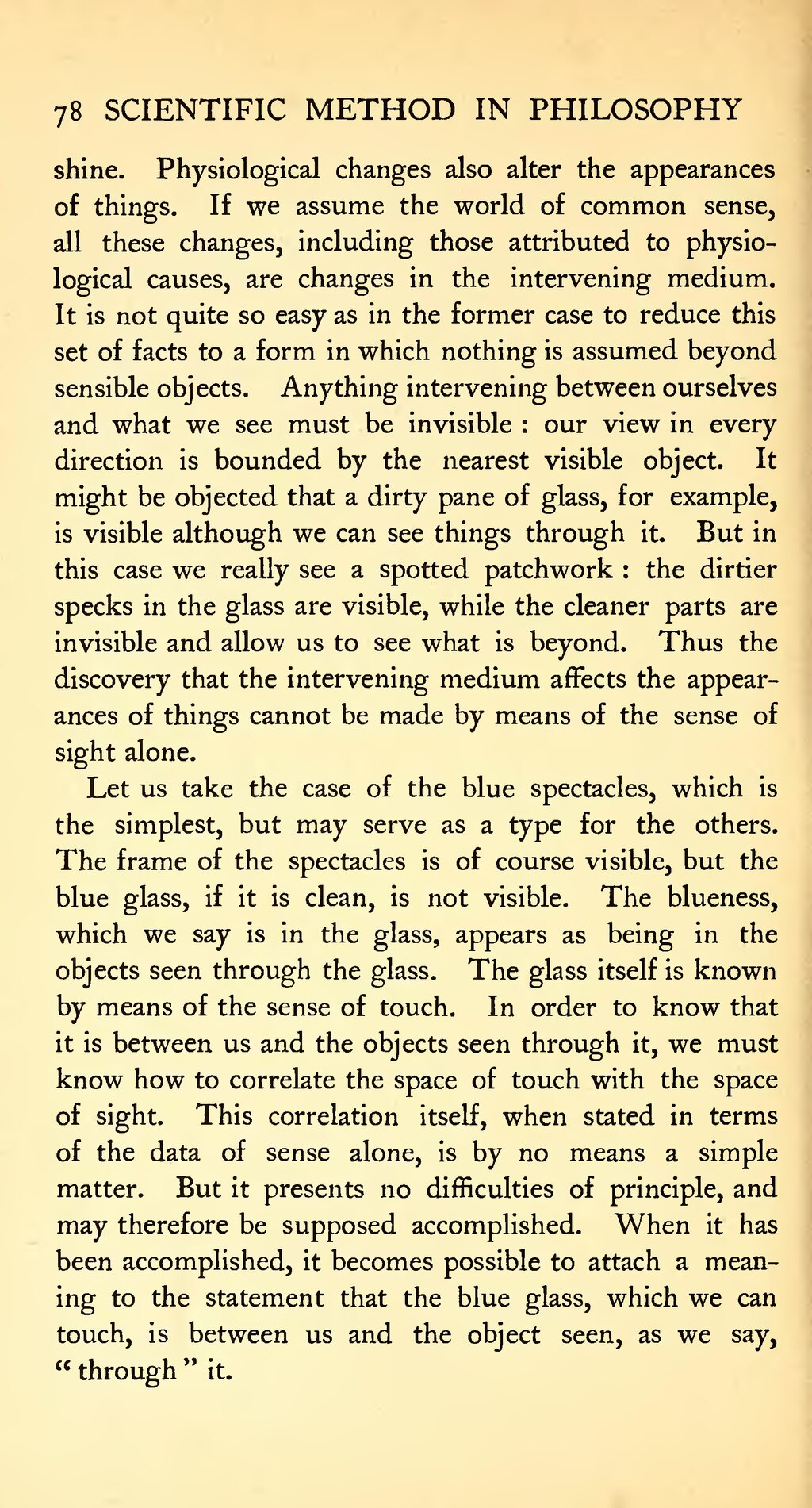shine. Physiological changes also alter the appearances of things. If we assume the world of common sense, all these changes, including those attributed to physiological causes, are changes in the intervening medium. It is not quite so easy as in the former case to reduce this set of facts to a form in which nothing is assumed beyond sensible objects. Anything intervening between ourselves and what we see must be invisible: our view in every direction is bounded by the nearest visible object. It might be objected that a dirty pane of glass, for example, is visible although we can see things through it. But in this case we really see a spotted patchwork: the dirtier specks in the glass are visible, while the cleaner parts are invisible and allow us to see what is beyond. Thus the discovery that the intervening medium affects the appearances of things cannot be made by means of the sense of sight alone.
Let us take the case of the blue spectacles, which is the simplest, but may serve as a type for the others. The frame of the spectacles is of course visible, but the blue glass, if it is clean, is not visible. The blueness, which we say is in the glass, appears as being in the objects seen through the glass. The glass itself is known by means of the sense of touch. In order to know that it is between us and the objects seen through it, we must know how to correlate the space of touch with the space of sight. This correlation itself, when stated in terms of the data of sense alone, is by no means a simple matter. But it presents no difficulties of principle, and may therefore be supposed accomplished. When it has been accomplished, it becomes possible to attach a meaning to the statement that the blue glass, which we can touch, is between us and the object seen, as we say, “through” it.

